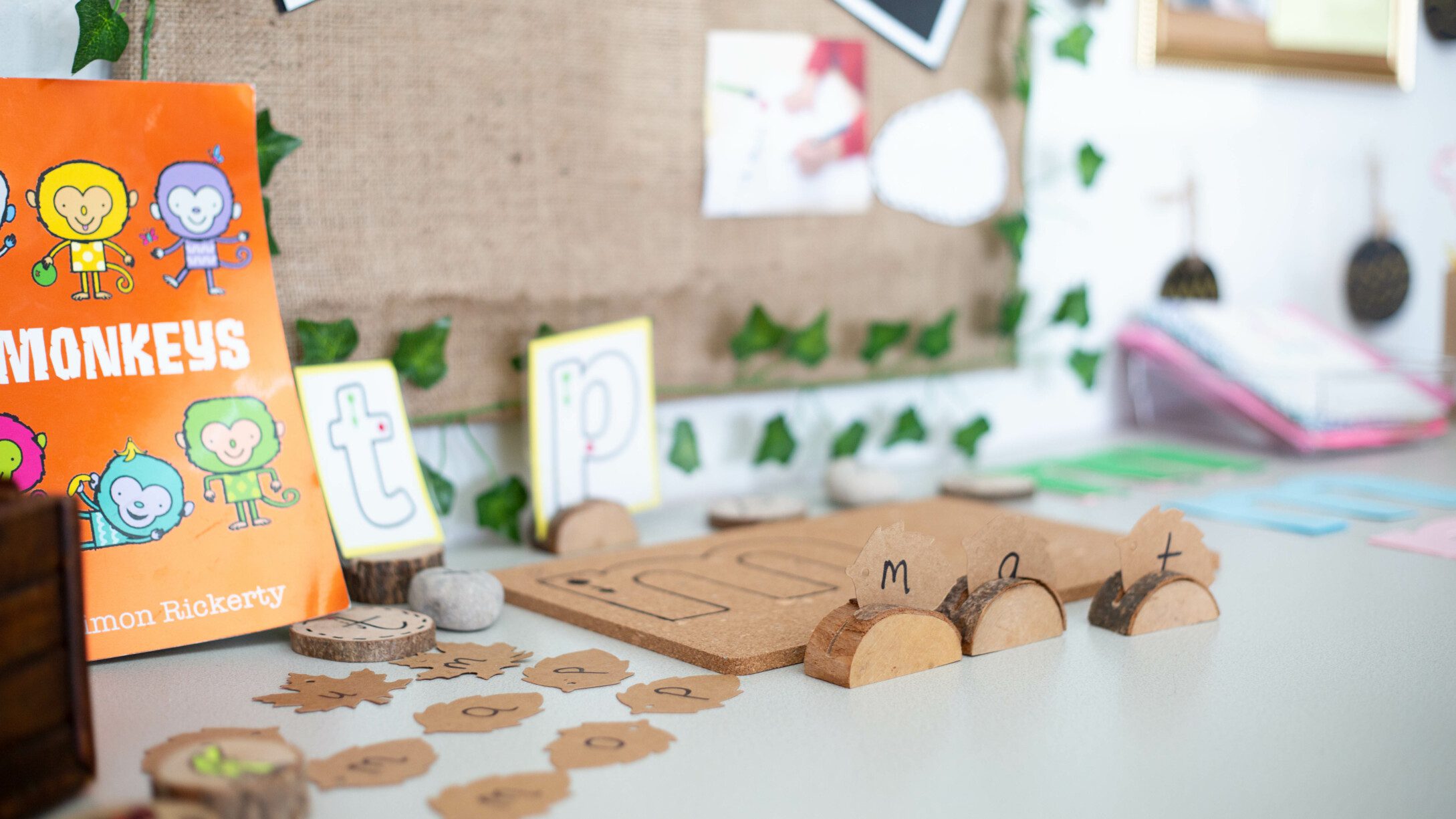At All Saints, phonics is used to teach pupils to read and spell words
Pupils in Reception and Year 1 have a 20-minute phonics session every day.
In Year 2, phonics skills are consolidated and pupils then move into learning more complex spelling rules and conventions.
We use a phonics scheme called Bug Club Phonics. Watch this introductory video to learn more about what Bug Club Phonics is and why we use it.
Phonics consists of:
- Identifying sounds in spoken words.
- Recognising the common spellings of each phoneme.
- Blending phonemes into words for reading (m-a-t becomes mat).
- Segmenting words into phonemes for spelling.
Terminology
Pupils will learn to use specific terminology from the beginning (and they love it!).
- A phoneme is the smallest unit of sound in a word (c-a-t, sh-o-p).
- A grapheme is the phoneme written down. This may consist of one letter (t), two letters (ch) or more than two letters (igh, aigh).
- A di-graph is a group of two letters that represent one phoneme (ch, sh, ee).
- A tri-graph is a group of three letters that represent one phoneme (igh, tch, ere).
Each Lesson
The daily phonics lesson follows a clear pattern:
| Revisit and review – no new learning; practising what we already know.
|
| Teach – a new phoneme/grapheme correspondence or tricky word(s).
|
| Practise – the new a new phoneme/grapheme correspondence in individual words; the tricky word(s).
|
| Apply – the new phoneme/grapheme correspondence in individual words; the tricky word(s) into a sentence for reading or writing.
|

Phases
Different phases of phonics are covered in different years.
| Phase 1 |
To develop phonological awareness including the ability to distinguish between sounds, speak clearly and audibly, become familiar with rhyme, rhythm, alliteration.
|
During Pre-School |
| Phase 2 |
To introduce 19 grapheme-phoneme (letter-sound) correspondences.
|
Reception |
| Phase 3 |
To teach children one grapheme for each of the remaining 44 phonemes in order to read and spell simple regular words.
|
Reception |
| Phase 4 |
To teach children to read and spell words containing adjacent consonants (stop).
|
Reception
Year 1 |
| Phase 5 |
Teaching children to recognise and use alternative ways of pronouncing the graphemes and spelling the phonemes already taught.
|
Year 1
Year 2 |
| Phase 6 |
Teaching children to develop their skill and automaticity in reading and spelling, creating ever-increasing capacity to attend to reading for meaning.
|
Year 2 |

Agreed Practice
The staff have made some agreements that ensure the teaching of phonics is consistent across the school. These are as follows:
- Phonics sessions take place every day in four parts.
- All children access phonics lessons.
- Phonics teaching focuses on the rigorous practice of blending and segmenting of words containing new and previously learned grapheme-phoneme correspondences.
- Phonics teaching follows the sequence of ‘Bug Club Phonics’.
- Technical language is used with the children – phoneme, grapheme, digraph etc.
- When spelling aloud beyond simple CVC (consonant vowel consonant such as c-a-t) words, letter names are used.
- Activities that require all the children to participate are used most of the time.
- Once learned, children are expected to use new grapheme-phoneme correspondences, high frequency and tricky words in their reading and writing.
If you have any questions about phonics at All Saints, or would like to know more about how to help your child, please contact your child’s class teacher, Mrs Hardwick or Mrs Redfern. They will be pleased to help.

